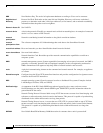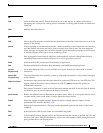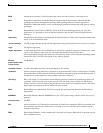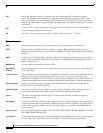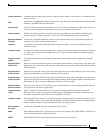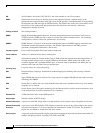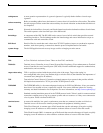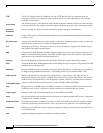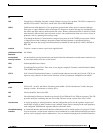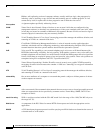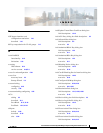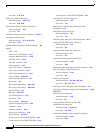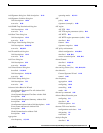
Glossary
GL-22
Cisco Intrusion Prevention System CLI Sensor Configuration Guide for IPS 7.1
OL-19892-01
TFTP
Trivial File Transfer Protocol. Simplified version of FTP that lets files be transferred from one
computer to another over a network, usually without the use of client authentication (for example,
username and password).
threat rating
TR. A threat rating is a value between 0 and 100 that represents a numerical decrease of the risk rating
of an attack based on the response action that depicts the threat of an alert on the monitored network.
three-way
handshake
Process whereby two protocol entities synchronize during connection establishment.
threshold
A value, either upper- or lower-bound that defines the maximum/minimum allowable condition before
an alarm is sent.
Time Processor
A processor in the IPS. Processes events stored in a time-slice calendar. Its primary task is to make stale
database entries expire and to calculate time-dependent statistics.
TLS
Transport Layer Security. The protocol used over stream transports to negotiate the identity of peers
and establish encrypted communications.
TNS
Transparent Network Substrate. Provides database applications with a single common interface to all
industry-standard network protocols. With TNS, database applications can connect to other database
applications across networks with different protocols.
topology
Physical arrangement of network nodes and media within an enterprise networking structure.
TPKT
Transport Packet. RFC 1006-defined method of demarking messages in a packet. The protocol uses ISO
transport services on top of TCP.
traceroute
Program available on many systems that traces the path a packet takes to a destination. It is used mostly
to debug routing problems between hosts. A traceroute protocol is also defined in RFC 1393.
traffic analysis
Inference of information from observable characteristics of data flow(s), even when the data is
encrypted or otherwise not directly available. Such characteristics include the identities and locations
of the source(s) and destination(s), and the presence, amount, frequency, and duration of occurrence.
Traffic ICMP engine
Analyzes traffic from nonstandard protocols, such as TFN2K, LOKI, and DDOS.
trap
Message sent by an SNMP agent to an NMS, a console, or a terminal to indicate the occurrence of a
significant event, such as a specifically defined condition or a threshold that was reached.
Trojan engine
Analyzes traffic from nonstandard protocols, such as BO2K and TFN2K.
trunk
Physical and logical connection between two switches across which network traffic travels. A backbone
is composed of a number of trunks.
trusted certificate
Certificate upon which a certificate user relies as being valid without the need for validation testing;
especially a public-key certificate that is used to provide the first public key in a certification path.
trusted key
Public key upon which a user relies; especially a public key that can be used as the first public key in
a certification path.
tune
Adjusting signature parameters to modify an existing signature.



